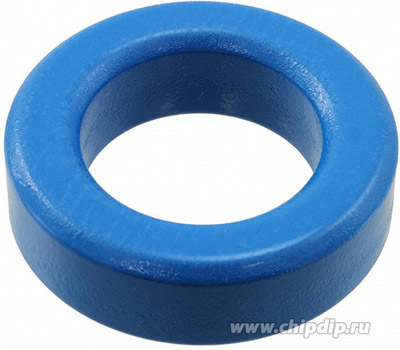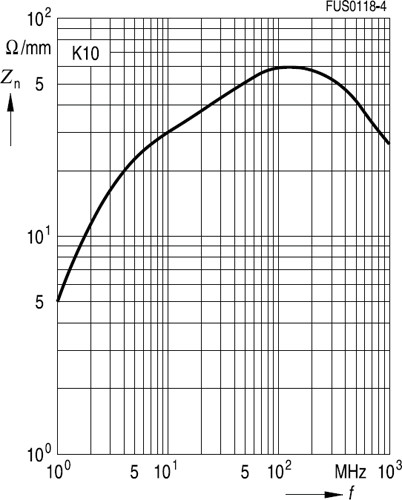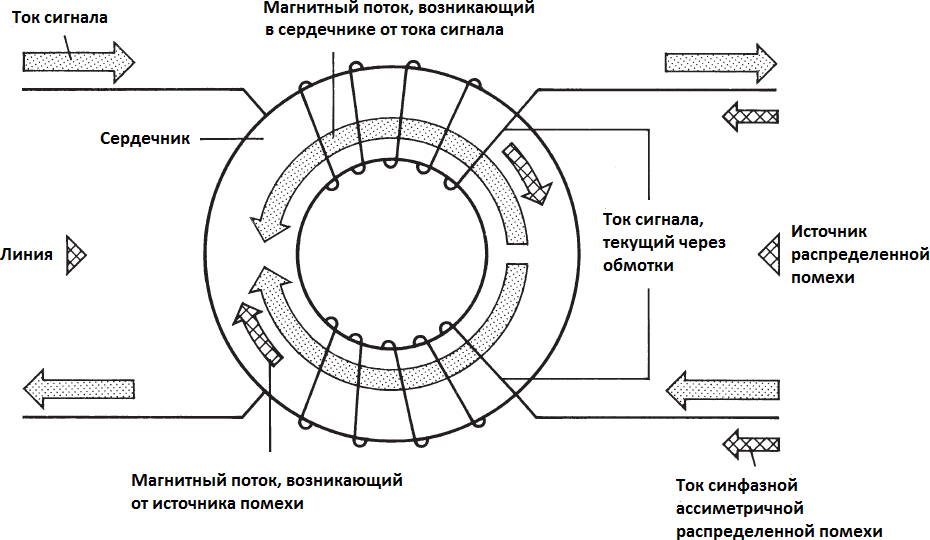Кольцевые ферритовые сердечники серии B64290 от компании TDK и их использование
Индуктивные элементы являются важной составляющей электронных и электрических схем. Одним из наиболее простых и существенных способов повысить индуктивность и улучшить характеристики индуктивных элементов является использование сердечников специальной формы из материалов, обладающих специальными магнитными свойствами.
Одним из популярных типов сердечников в продукции компании TDK являются кольцевые сердечники тороидальной формы серии B64290. Вся продуктовая линейка включает в себя широкий ряд кольцевых сердечников, варьирующихся диаметром от 2.5 до 202 мм.
 Внешний вид кольцевого сердечника серии B64290
Внешний вид кольцевого сердечника серии B64290
Типовым применением сердечников из NiZn сплава являются дроссели для использования в проводной локальной сети передачи данных (LAN) с сердечником из материала типа K10 от TDK. Для подавления электромагнитных помех в других применениях более предпочтительно использовать сердечники из MnZn сплава со следующими диаметрами:
- Диаметром от 2.5 до 12.5 мм более предпочтительно использовать для телекоммуникационных линий (тип материала N30, T38, T46);
- Диаметром от 13.3 до 26 мм больше подходят для дросселей в линиях электропитания (тип материала N30, T65, T35, T37, T38);
- Диаметром свыше 34 мм – для дросселей и фильтров индустриального применения в силовых линиях (тип T65).
Компания TDK выпускает кольцевые сердечники в различных вариантах покрытия, что позволяет найти подходящее решение для любого применения. Покрытие не только обеспечивает защиту краев сердечника, но и выполняет изоляционную функцию. Для небольших кольцевых сердечников (для малых диаметров до 9.53 мм) используется париленовое покрытие, которое отличается малой толщиной и высокой диэлектрической прочностью. Второй тип используемого покрытия, для сердечников среднего и крупного размеров (свыше 9.53 мм) – эпоксидная смола. Между собой оба вида покрытия различаются по цвету: париленовое покрытие бесцветное, а эпоксидное имеет синий цвет.
Кольцевые сердечники преимущественно используются в качестве согласующих трансформаторах и электромагнитных дросселей для подавления радиочастотных помех в диапазоне МГц:
- При проектировании согласующего (сигнального) трансформатора в проводной локальной сети (LAN) сигнала с коэффициентом трансформации 1:1 обычно используются небольшие кольцевые сердечники тороидальной формы. Функцией такого трансформатора является согласование импеданса линии и сетевого окончания (абонентского оборудования).
- Для подавления синфазных помех также в проводной сети LAN в диапазоне частот от 30 МГц до 300 МГц необходимо использовать дроссели с компенсацией тока. Соответствующим типом ферритового материала является K10, который представляет собой материал NiZn с проницаемостью около 700 для небольших сердечников с париленовым покрытием. Кривая зависимости импеданса от частоты K10 идеально адаптирована к требованиям подавления в локальной сети:
 Нормализованная кривая зависимости импеданса от частоты для сердечника R10 (2 витка)
Нормализованная кривая зависимости импеданса от частоты для сердечника R10 (2 витка)
- Для защиты от электромагнитных помех (Electromagnetic interference, EMI) кольцевые сердечники тороидальной формы также применяются для создания синфазного дросселя. Компактное электрическое и электронное оборудование, в первую очередь, создает синфазные помехи. Для соответствия требованиям безопасности (без выхода за пределы допустимого тока утечки), необходимо использовать дроссели с высокой асимметричной эффективной индуктивностью. Для этой цели целесообразно применение дросселей с компенсацией тока и топологией замкнутого сердечника. Проблема насыщения материала сердечника из-за полезного тока решается в такой конструкции путем намотки двух обмоток (фактически катушек по каждой линии дифференциальной пары) с равным числом витков на сердечник. Эти обмотки соединены таким образом, что магнитный поток, индуцируемый верхней обмоткой, компенсируется нижней.
 Принцип работы синфазного дросселя
Принцип работы синфазного дросселя
Так как дифференциальный полезный сигнал представляет собой пару сигналов с обычно равными амплитудами, но разными фазами (повернутыми относительно друг друга на 180°), то при прохождении дифференциального сигнала через синфазный дроссель каждая из его составляющих создает магнитный поток разной полярности. Эти потоки нейтрализуют друг друга, что делает дроссель прозрачным для прохождения дифференциального сигнала (на практике с небольшими потерями полезного сигнала). А синфазный сигнал от источника распределенной помехи образован двумя сигналами с равной амплитудой и одинаковой фазой. При его прохождении через синфазный дроссель магнитные потоки двух сигналов складываются в ферритовом сердечнике, импеданс дросселя увеличивается, что приводит к значительному подавлению синфазного сигнала.
Более подробно технические характеристики кольцевых сердечников тороидальной формы серии B64290 от компании TDK представлены в Спецификации.
